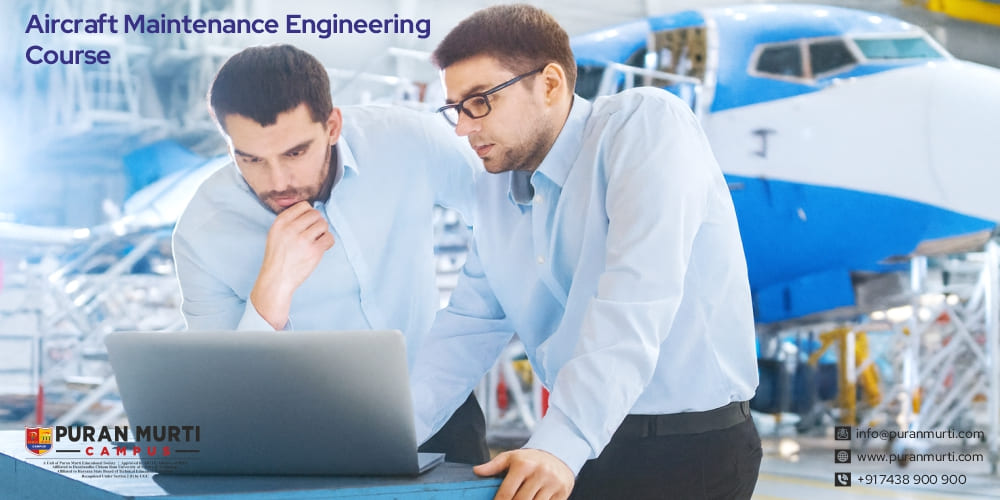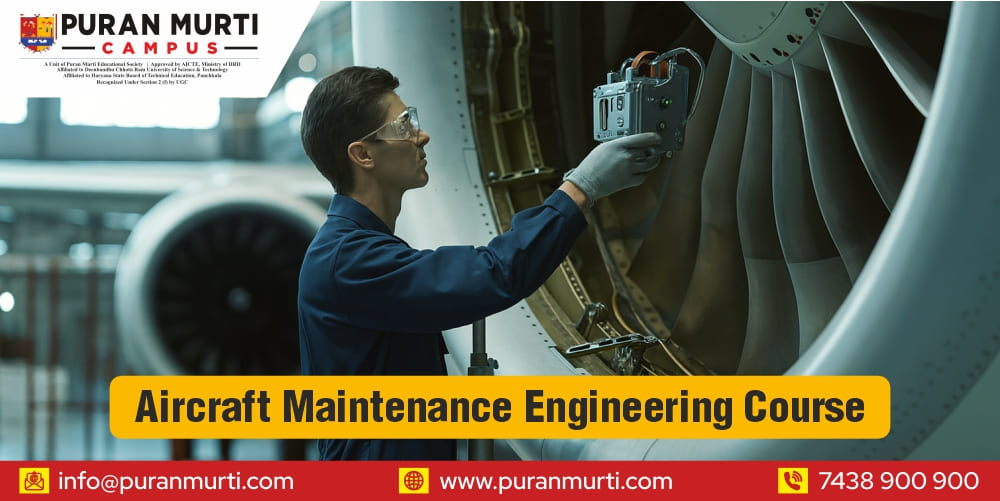Aircraft Maintenance Engineer Course
Posted on : 11 October, 2025 5:57 pm
Aircraft Maintenance Engineer
AME Course is a specialized professional program designed to train students in the inspection, maintenance, repair, and troubleshooting of aircraft to ensure their safety and airworthiness. Aircraft Maintenance Engineers play a vital role in aviation safety. Without the approval of a certified AME, no aircraft is allowed to take off highlighting the importance of this profession. AME course is approved by Directorate General of Civil Aviation (DGCA), Government of India.
About the Course
Duration: 2 to 4 years (depending on the program and category).
Qualification Awarded: License-based program (not just a degree/diploma). After training, students must clear DGCA exams to get the AME license.
Eligibility Criteria
Educational Qualification:
- Students have to do there 10+2 with Physics, Chemistry, Mathematics (PCM). Or
- A diploma in Mechanical, Electrical, Electronics, Aerospace Engineering.
Age Criteria:
- Minimum age is 16-18 years at admission.
Medical Fitness:
- Students must be physically fit (class II medical fitness certificate).
Types of AME course
1] Category A (Line Maintenance)
Duration: About 2 Years.
Focus: Minor maintenance and quick repairs on the aircraft during transit or between flight.
Role: Category A engineers perform routine inspections, identify defects, and carry out small repairs on the spot.
Sub-Category in Category A:
-
A1: Turbine Engine Aeroplanes.
-
A2: Piston Engine Aeroplanes.
-
A3: Turbine Engine Helicopters.
-
A4: Piston Engine Helicopters.
2] Category B (Base Maintenance)
Duration: about 2 to 4 years.
Focus: Detailed inspection, major repairs, and complete Overhauls of aircraft Systems.
Role: Category B engineers can troubleshoot complex systems and sign off on major maintenance work.
Sub-Category in Category B:
-
B1 (Mechanical Stream):
-
B1.1: Aeroplanes with Turbine Engines
-
B1.2: Aeroplanes with Piston Engines
-
B1.3: Helicopters with Turbine Engines
-
B1.4: Helicopters with Piston Engines
-
-
B2 (Avionics Stream):
-
Involves electrical, electronic, and instrumentation systems — navigation, radar, autopilot, and communication systems.

-
Curriculum and Subjects
AME Course includes a combination of both theory and hands on practical training. Subjects includes are like:
- Aircraft Structure and systems.
- Aircraft engine and propulsion.
- Aerodynamics.
- Electrical and Electronic Systems.
- Aircraft Materials and Hardware.
- Aviation Rules and Regulations (CARs).
- Human Factor and Safety Management.
- Aircraft Instruments and Avionics Systems.
- Maintenance Practices and troubleshooting.
Training and Practical Exposure
Institutional Training (On-Campus Practical)
Students undergo laboratory-based and workshop training within the campus. Such as
- Airframe Workshop
- Engine Workshop
- Avionics labs
- Hydraulic and Pneumatic System labs
- Human Factors and Safety Training
Practical Training at Approved MROs and Airport
Students after complete their Classroom and internal Training, they move to real aircraft maintenance environments.
Training includes:
- Line Maintenance.
- Base Maintenance.
- Defect Rectification.
- Aircraft System Testing.
- Maintenance Records And Documentation.
Career Opportunities
A career of an Aircraft Maintenance Engineering (AME) is one of the rewarding paths in the aviation industry. Many AMEs after completing course join Aircraft Manufacturing companies such as HAL, Airbus, or Boeing.
Licensed AME are in high demand in airlines, where they inspect and certify aircraft before every flight. They also find excellent roles in Maintenance, Repair, and Overhaul (MRO) organizations like Air India Engineering Services Ltd., GMR Aero Technic, Boeing and Airbus. After complete the AME course successfully and obtaining a DGCA license, they can work in various aviation sector that ensure the safety and airworthiness of aircraft.
- Airlines.
- Maintenance, Repair and Overhaul (MRO) Organizations.
- Aircraft Manufacturing Companies.
- Aviation Training Institutes.
- Government and Defense Organizations.
Salary Scope
At beginning, a fresh AME graduates or Trainees can earn around 3lakh to 5lakh per annum, depending on the organization and level of practical experience.
Licensed AMEs typically can earn around 8lakh to 15lakh per annum.
Senior AMEs, Maintenance Managers, and Quality Assurance Engineers can earn 15lakh to 25lakh per annum. with experience and additional type ratings, salaries can go even higher.

